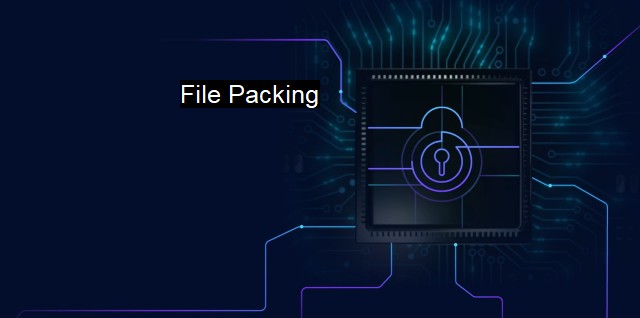What is File Packing?
Unpacking File Packing: Techniques, Reasons, and Impacts on Cybersecurity and Antivirus Solutions.
File Packing is a technique widely used within the cybersecurity field, closely related to the antivirus mechanism. It is a term often associated with a set of methods aiming to minimize the physical size of executable files. But its purpose extends beyond just compressing files as it assists in protecting program code from reverse engineering, modification, and theft.Traditional file packing emerged as a way to make files smaller so that they can occupy lesser storage space, be it on the hard disk, USB, or over a network. The packed files, also known as compressed or zip files, help majorly in data management. While this is a practical way it's a double-edged sword, mainly due to its usage in camouflaging malware.
In the cybersecurity context, packers represent an array of tools employed to obscure the real content of a file, making its code hard to interpret or unreadable. It subsequently deceives the malware analyst, user, or built-in security defense as the packed file may appear innocent at first sight. But the real motive can be revealed once the file is executed – causing harms, such as viruses, Trojans, ransomware, and more.
File packing encrypts the content, modifies certain sections of it, or even adds unnecessary data, intending to obfuscate. Various malware authors or cybercriminals employ packing in a hope to bypass antivirus (AV) solutions. Antivirus software uses distinct signatures to recognize potential threats, but when a file is packed, these unique signatures are hidden, and the antivirus struggles to identify the potential infection.
Some AV engines hold certain unpacking routines for mainstream packers, but modern packers come with advanced customization facilities allowing unique packing strategies every time. As a result, no two pieces of packed malware would look the same in binary form, leading to difficulties in their detection and identification.
In the face of an alarming rise in the number of cybersecurity threats, most AV scanners are competent at examining the unpacked file after it is executed in the system's memory - sometimes referred to as dynamic analysis. Antivirus software often integrates sandboxing techniques to run these files in an isolated environment to analyze runtime behavior, ensuring minimal harm to the system in case a hidden malware gets activated.
This systemic unpacking is not fool-proof. Malware writers are consistently enhancing the armory of packers with sophisticated methods like time bombs, or "logic bombs,'' which are programmed to execute malicious code at a particular date or when a specific action is performed.
Compounding the problem, multi-layered packing only makes the situation worse. A packed file can be packed repeatedly, each packing potentially using different packing mechanisms which complicates the manual unpacking process and can evade detection from antivirus software.
Packed malware is prevalent today as packing tools are readily available for anyone to use. There are numerous legitimate packers which are used for lawful purposes but are abused by criminals to hide malware. Besides, illegal mysterious packers are with strong engine obfuscation technologies, and multi-layered packing methods are tricky to handle.
Packed files are practical resources that can be exploited with malicious intentions. There is the continuous arm-wrestle in pace between cybercriminals, who become more sophisticated in packing techniques to hide malicious software, and cybersecurity analysts and antivirus programs that try hard to foresee, detect, and combat the newest packing ploys. The future of packing in cybersecurity will likely hinge on ongoing improvements in heuristic and behavioral analysis techniques, enabling the proactive identification and defense against packed malware. It is a theme that reinforces that cybersecurity is not a static field; rather resets its boundaries almost every day.

File Packing FAQs
What is file packing?
File packing refers to the process of compressing and encoding files to make them smaller in size and more difficult to detect by antivirus software.Why do cybercriminals use file packing?
Cybercriminals use file packing to evade detection by antivirus software and other security solutions. By packing their malicious code, they can bypass security controls and deliver their malware to unsuspecting victims.How do antivirus programs detect packed files?
Antivirus programs use various techniques to detect packed files, such as signature-based detection, behavioral analysis, and heuristics. Some advanced antivirus solutions also use machine learning and AI to detect and analyze packed files.Can legitimate software also use file packing?
Yes, legitimate software may use file packing to compress and protect their code. However, some security solutions may flag packed files as suspicious, so it's important to ensure that the packed files are safe and not infected with malware.| | A | | | B | | | C | | | D | | | E | | | F | | | G | | | H | | | I | | | J | | | K | | | L | | | M | |
| | N | | | O | | | P | | | Q | | | R | | | S | | | T | | | U | | | V | | | W | | | X | | | Y | | | Z | |
| | 1 | | | 2 | | | 3 | | | 4 | | | 7 | | | 8 | | |||||||